In the areas affected by the 2024 Noto Peninsula Earthquake on New Year’s Day in Japan, a small-scale water recycling system that can reclaim more than 98% of wastewater on site has been contributing to the resolution of water-supply issues. It boasts a unique, leading-edge water treatment technology, as well as a design that allows for operation by anyone, anywhere.
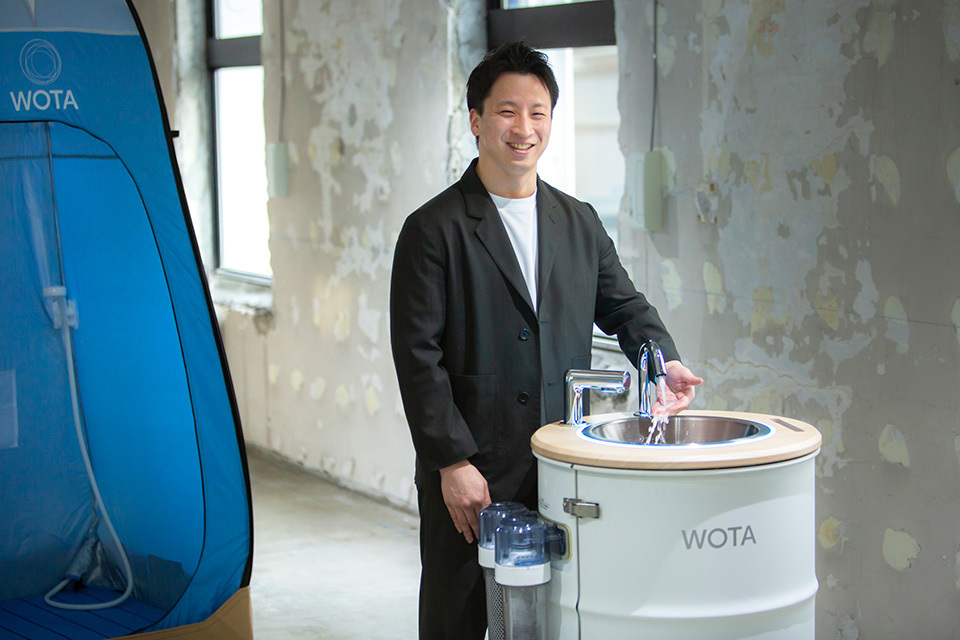
WOTA’s CEO MAEDA Yosuke with the water-recycling handwashing stand WOSH (right foreground), released in 2020, which is used not only in disaster-affected areas, but also in public spaces and at event venues.
In Japan—perennially assaulted by natural disasters such as earthquakes and tsunamis—disaster countermeasures have been grounded on past experience and the latest technologies. Several new efforts have sprung up since the 2024 Noto Peninsula Earthquake that struck on January 1. According to Prime Minister KISHIDA Fumio, “The common thread running through these [initiatives] is the power of our bonds, a traditional strength of the Japanese people, intensifying through its combination with new elements—with digital fields, startups, new public-private collaboration, or resource recycling—to become a new strength for Japan.”
One leading example is a small-scale water recycling system that allows people to bathe and wash their hands in areas with a disrupted water supply. The WOTA BOX—developed by WOTA Corp., a startup established in 2014—can reclaim over 98% of wastewater on site for repeated, safe reuse. Although approximately 5,000 liters of water are usually needed for 100 people to shower, WOTA BOX can reduce that amount to about 100 liters, or just 2% of the original amount. WOTA’s system was deployed after the Heavy Rain Event of 2018 in western Japan, the Hokkaido Eastern Iburi Earthquake of the same year, and even after the Turkey-Syria Earthquake that occurred in 2023.

The WOTA BOX (wheeled white object in front center) is used together with a shower tent, clothes-changing tent, water tank, and water heater. It can be set up by two people in as little as 15 minutes.
On the Noto Peninsula, the system has been successfully introduced to all the places where the water supply has been disrupted for extended periods of time. Some 100 WOTA BOX sets with shower kits and 200 WOSH handwashing stands equipped with a similar system have been installed at evacuation centers and other locations, providing enough water for about 6,000 showers and 50,000 handwashings daily.
The key features of WOTA’s “small-scale decentralized water reuse system” are its easy mobility and universal usability. “As the first system developed was a stationary model and hence difficult for people in disaster-afflicted areas to operate by themselves, we could only partially meet the needs of the people affected by the Heavy Rain Event of 2018 in western Japan. Learning from that experience, we proceeded with the development of a system that can be operated by anyone, anywhere,” said WOTA’s CEO MAEDA Yosuke.
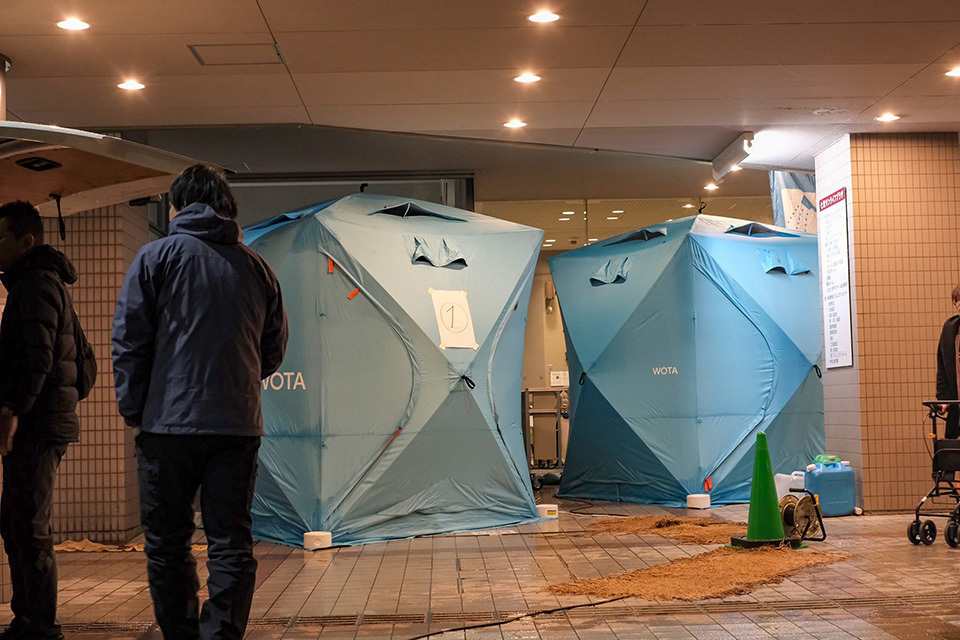
The WOTA BOX with shower kits set up at an evacuation center in Noto. Depending on the environment, essentially, it can be installed in a space of just four meters by two meters.
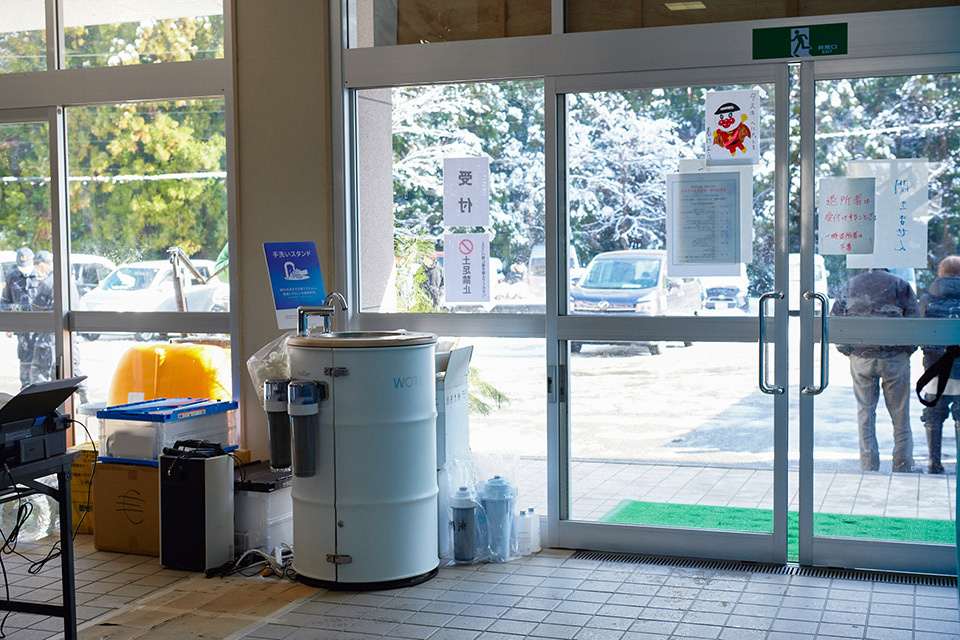
The water-recycling handwashing stand WOSH installed at the entrance of an evacuation center in Noto.
While high-precision water-treatment processes typically require complex adjustments by skilled professionals, WOTA has successfully developed a unique algorithm for optimal water treatment control using digital technology, and has realized automation. The system can be operated through a comprehensive touch panel, constantly displaying the water-supply levels as well as the condition of consumable parts such as filters, and its compact body moves easily atop small wheels. Thanks to those functionalities, autonomous operation is being widely practiced in Noto, with people able to operate it by themselves at evacuation centers and medical and welfare facilities where the system is installed.
When the prime minister visited the area in mid-January, a middle school student involved in the system’s operation at an evacuation center explained to him how easy it was to operate. “This heartening interaction showed me just how much things have changed since 2018,” said Maeda.
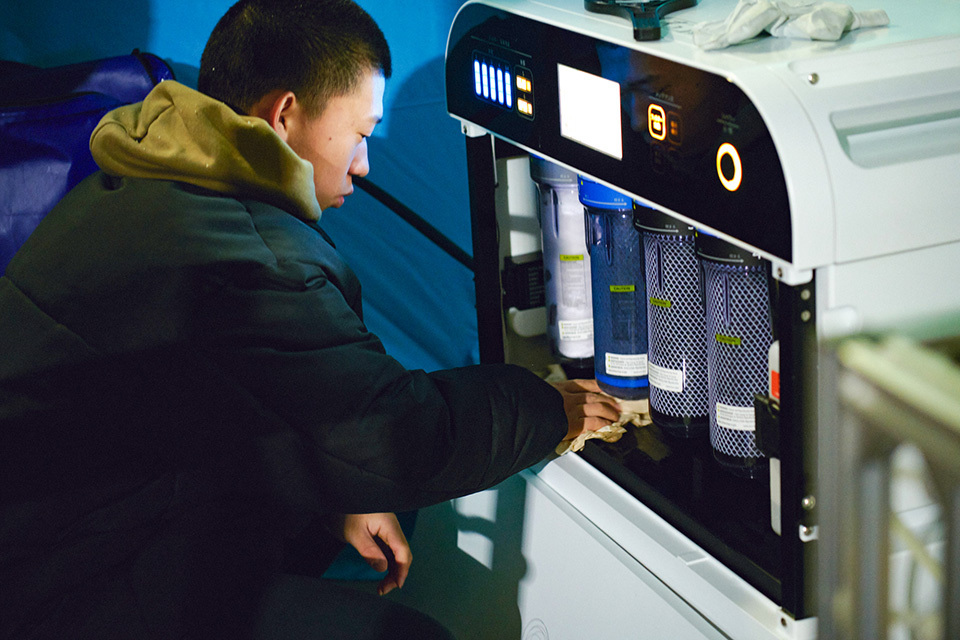
A middle school student carrying out maintenance on the inside of a WOTA BOX at an evacuation center in Noto.
WOTA’s system also has the potential to solve various water challenges other than those arising through disasters. Even in areas with scarce water resources or where water-supply infrastructure has not been developed widely, or where water infrastructure is difficult to maintain due to population decline, it can provide a stable supply of safe water without the need for water and sewer systems. Maeda said, “In recent years, we have been getting an increasing number of requests to implement our systems in houses for everyday residential use.”
The system’s social application has already begun on a remote island in Tokyo Prefecture, as well as in depopulated areas in Ehime Prefecture, and the implementation of projects overseas has been planned, including one in Antigua and Barbuda, an island country in the Caribbean. “The idea that local people can solve local water problems themselves—that’s what is essential for quick and sustainable solutions to water issues. We wish to provide the world with new systems to ensure that happens.”
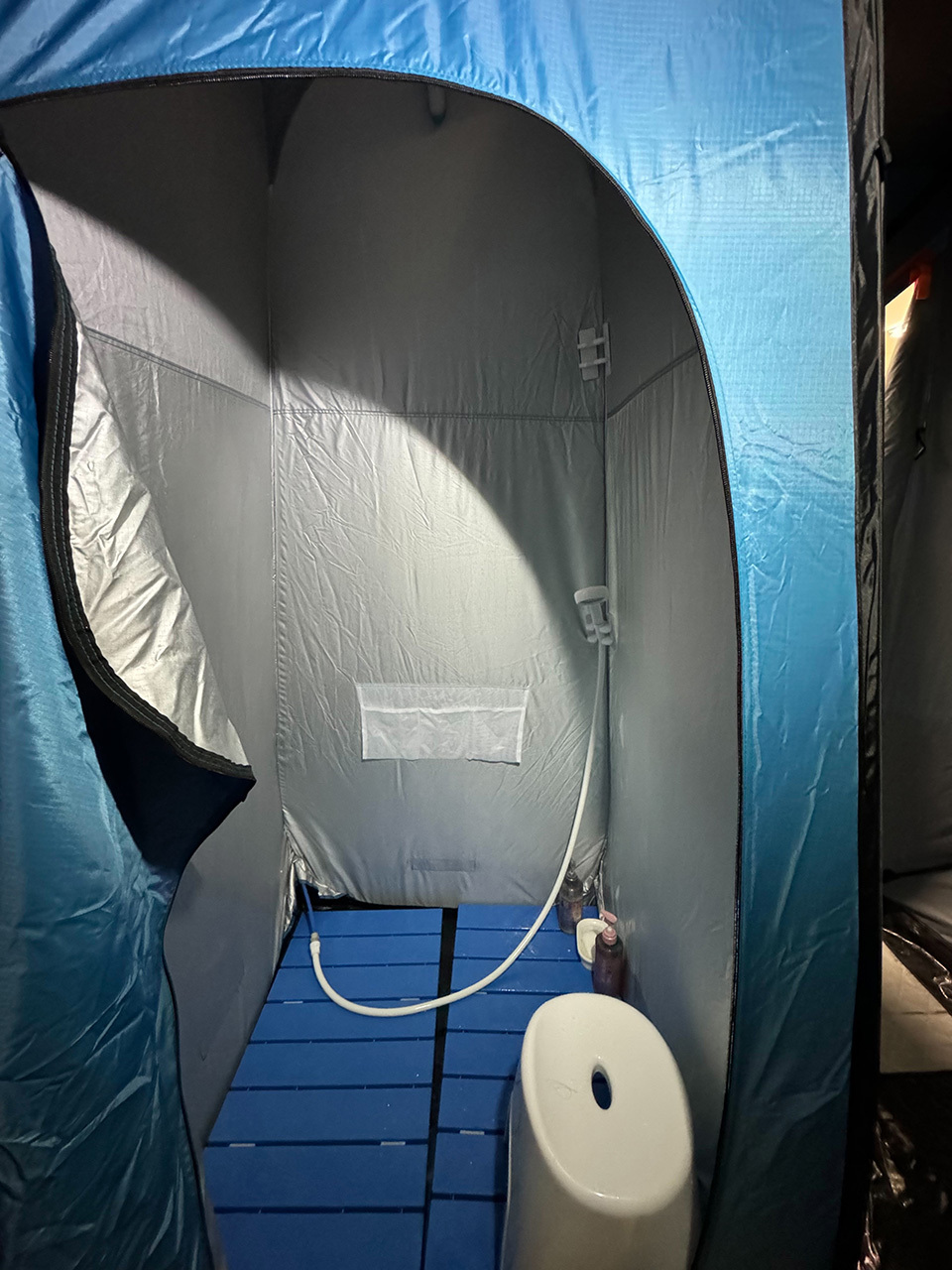
Inside the shower tent. Wastewater that flows under the ground boards is collected and repeatedly recycled.






























